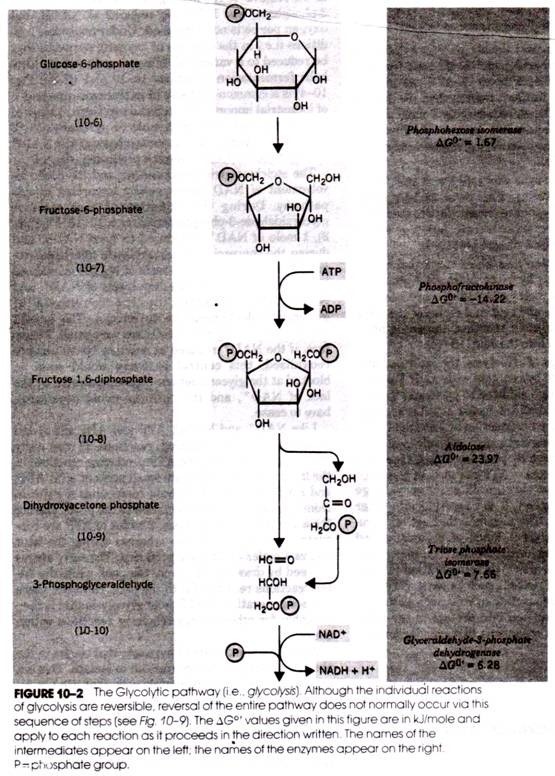In this article we will discuss about:- 1. Introduction to Cyanophyceae 2. Characteristics of Cyanophyceae 3. Occurrence 4. Thallus Organisation 5. Reproduction 6. Origin 7. Affinities 8. Economic Importance.
Introduction to Cyanophyceae:
It is a primitive group of algae, consists of 150 genera and about 2,500 species. In India, the division is represented by 98 genera and about 833 species. Members of the class Myxophyceae (Cyanophyceae) are commonly known as blue green algae. The name blue green algae is given because of the presence of a dominant pigment c-phycocyanin, the blue green pigment.
In addition, other pigments like chlorophyll a (green), c-phycoerythrin (red), β-carotene and different xanthophylls are also present. The members of this class are the simplest living autotrophic prokaryotes.
They have the following important characteristics:
a. Nucleus is of prokaryotic nature i.e., devoid of nuclear membrane and nucleolus,
b. Absence of well-organised cell organelles, and
c. Pigments are distributed throughout the chromoplasm (the outer part of protoplasm).
Depending on the above prokaryotic characteristics many microbiologists consider the members of Cyanophyceae as bacteria. Based on prokaryotic cell structure like bacteria, Christensen (1962) placed both Cyanophyta and bacteria under a common phylum Prokaryota. Cyanophyta or blue green algae have also been named as cyanobacteria.
Important Characteristics of Cyanophyceae:
The important characteristics of the division are as follows:
1. The individual cells are prokaryotic in nature. The nucleus is incipient type and they lack membrane bound organelles.
2. Both vegetative and reproductive cells are non-flagellate.
3. Cell wall is made up of microfibrils and is differentiated into four (4) layers. The cell wall composed of mucopeptide, along with carbohydrates, amino acids and fatty acids.
4. Locomotion is generally absent, but when occurs, it is of gliding or jerky type.
5. The principal pigments are chlorophylls a (green), c-phycocyanin (blue) and c-phyco- erythrin (red). In addition, other pigments like β-carotene and different xanthophylls like myxoxanthin and myxoxanthophyll are also present.
6. Membrane bound chromatophore are absent. Pigments are found embedded in thylakoids.
7. The reserve foods are cyanophycean starch and cyanophycean granules (protein).
8. Many filamentous members possess specialized cells of disputed function (supposed to be the centre of N2 fixation) known as heterocysts.
9. Reproduction takes place by vegetative and asexual methods. Vegetative reproduction takes place by cell division, fragmentation etc. Asexual reproduction takes place by endospores, exospores, akinetes, nannospores etc.
10. Sexual reproduction is completely absent. Genetic recombination is reported in 2 cases.
Occurrence of Cyanophyceae:
Members of Cyanophyceae are available in different habitats. Most of the species are fresh water (e.g., Oscillatoria, Rivularia), a few are marine (e.g., Trichodesmium, Darmocarpa), and some species of Oscillatoria and Nostoc are grown on terrestrial habitat.
Species of some members like Anabaena grow as endophytes in thallus of Anthoceros (Bryophyta) and in leaves of Azolla (Pteridophyta) and Nostoc in the root of Cycas (Gymnosperm).
Species of Nostoc, Scytonema, Gloeocapsa, and Chroococcus grow symbiotically with different fungi and form lichen. Some members like Nostoc, Anabaena etc. can fix atmospheric nitrogen and increase soil fertility.
Thallus Organisation in Cyanophyceae:
Plants of this group show much variation in their thallus organisation.
The thallus may be of unicellular or colonial forms:
1. Unicellular Form:
In unicellular form, the cells may be oval or spherical. Common members are Gloeocapsa (Fig. 3.23A), Chroococcus and Synechococcus.
2. Colonial Form:
In most of the members the cells after division remain attached by their cell wall or remain together in a common gelatinous matrix, called a colony.
The colonies may be of two types:
a. Non- filamentous, and
b. Filamentous.
a. Non-Filamentous Type:
The cells of this type divide either alternately or in three planes, thereby they form spherical (Gomphosphaera, Coelosphaerum), cubical (Eucapsis alpine, Fig. 3.23C), squarish (Merismopedia) or irregular (Microcystis, Fig. 3.23B) colony.
b. Filamentous Type:
By the repeated cell division in one plane, single row of cells are formed, known as trichome. e.g., Oscillatoria (Fig. 3.23D), Spirulina, Arthosporia etc. The trichome when covered by mucilaginous sheath is called a filament. The filament may contain single trichome (Oscillatoria, Lyngbya) or several trichomes (Hydrocoleus, Microcoleus, Fig. 3.23E).
The trichomes may be unbranched (Oscillatoria, Lyngbya), branched (Mastigocladus limilosus, Fig. 3.23J) and falsely branched (Scytonema, Fig. 3.23K and Tolypothrix).
Reproduction in Cyanophyceae:
The blue green algae (Cyanophyceae) reproduce by both vegetative and asexual means. Sexual reproduction is absent.
The vegetative reproduction performs through fission (Synechococcus), fragmentation (Oscillatoria, Cylindrospermum muscicola), hormogonia formation (Oscillatoria, Nostoc), hormospores (Westiella lanosa), planococci and Palmelloid stage.
During asexual reproduction various types of asexual spores are formed. These are akinetes (Anabaena sphaerica, Gloeotrichia natans, Calothrix fusca), endospores (Dermocarpa), exospores (Chamaesiphon) and nannocyte (Microcystis) (Fig. 3.27).
Gaidukov phenomenon or complementary chromatic adaptation:
The efficiency to change the pigment composition, to absorb maximum light for photosynthesis, with the variation of the incident light is called complementary chromatic adaptation.
Many members of Cyanophyceae have the capacity to change their colour in relation to the wave length of incident light. Due to variation of the wavelength of incident light they can change their pigment composition.
It may appear blue green in yellow light, green in red light and reddish in green light. Gaidukov (1903) first invented the phenomenon and according to his name it is also known as Gaidukov phenomenon.
Origin of Cyanophyceae:
This group is considered to be the most primitive because of the presence of some important features.
These are:
a. Presence of unorganised nucleus,
b. Absence of chromatophores,
c. Absence of flagella, and
d. Lack of sexual reproduction.
They are found in all habitats where life is possible and distributed throughout the world. Fossil records indicate that they have originated in early Pre-Cambrian period. But their ancestry is not known. Absence of flagella and the prokaryotic nature of cells lead to believe that possibly they have originated from unicellular aflagellate cells.
Presence of most of the members in terrestrial habitat leads to believe by most of the investigators that the Cyanophyceae have originated from terrestrial members.
Affinities of Cyanophyceae:
The members of Cyanophyceae show some relationship with both bacteria and Rhodophyceae.
Similarities of Cyanophyceae with Bacteria:
1. Cell structure is prokaryotic in both the group, having unorganised nucleus and devoid of membrane bound organelle.
2. The capsule of bacteria (if present) and mucilaginous sheath of blue green algal cells are made up of fine fibrils.
3. Cell wall composed of mucopeptide (murein).
4. Oscillatoria (blue green alga) shows similarity with Beggiatoa (sulphur bacterium), both in shape and movement.
5. Both are sensitive to antibiotics.
6. Both the groups show similarity in many metabolic processes like nitrogen and sulphur metabolism.
7. Absence of sexual reproduction.
8. Genetic recombination has been reported in Anacystis nidulans, a member of Cyanophyceae, showing similarity with bacteria.
Similarities of Cyanophyceae with Rhodophyceae (Red Algae):
1. Both the groups resemble in the absence of motile cells.
2. The Cyanophycean pigments, c-phycocyanin (blue) and c-phycoerythrin (red) are chemically similar to the Rhodophycean pigment r-phycocyanin and r-phycoerythrin.
3. Stignema and some other members of Cyanophyceae have pit connections, and show relationship by having similar structures as found in the members of Rhodophyceae.
Economic Importance of Cyanophyceae:
The Cyanophycean members show both beneficial and harmful activities.
Beneficial Activities:
1. Nostoc commune is boiled and used as soup in China.
2. Few species of Nostoc, Anabaena, Scytonema form a thick substratum over the soil resulting a reclamation of land.
3. About twenty two (22) filamentous members of Cyanophyceae like Nostoc, Anabaena, Aulosira, Anabinopsis, Calothrix, Scytonema etc. can fix atmospheric nitrogen and form nitrogenous compounds. These compounds are further absorbed by the plant for their metabolic activity and increase yield.
All the above members have heterocyst. But certain non-heterocystous members like Plectonema boryanum are able to fix atmospheric nitrogen in anaerobic condition.
Harmful Activities:
1. Some members of Cyanophyceae cause damage of building plasters, stones etc. It can be avoided by spraying CuSO4 and sodium arcenate.
2. Some members like Microcystis, Anabaena, form water blooms and can grow well in O2 deficient water. Continuous respiration by submerged plants and animals during night time (when photosynthesis does not take place) causes the depletion of O2 to almost zero level. At that condition mortality of both animals and other submerged plants takes place due to suffocation.
3. Blue green algae contaminate the water of reservoirs. They develop a foul odour in water and make it unhygienic for human being and cause several diseases.
Different diseases like gastric troubles may appear by drinking the water contaminated with Microcystis and Anabaena.

